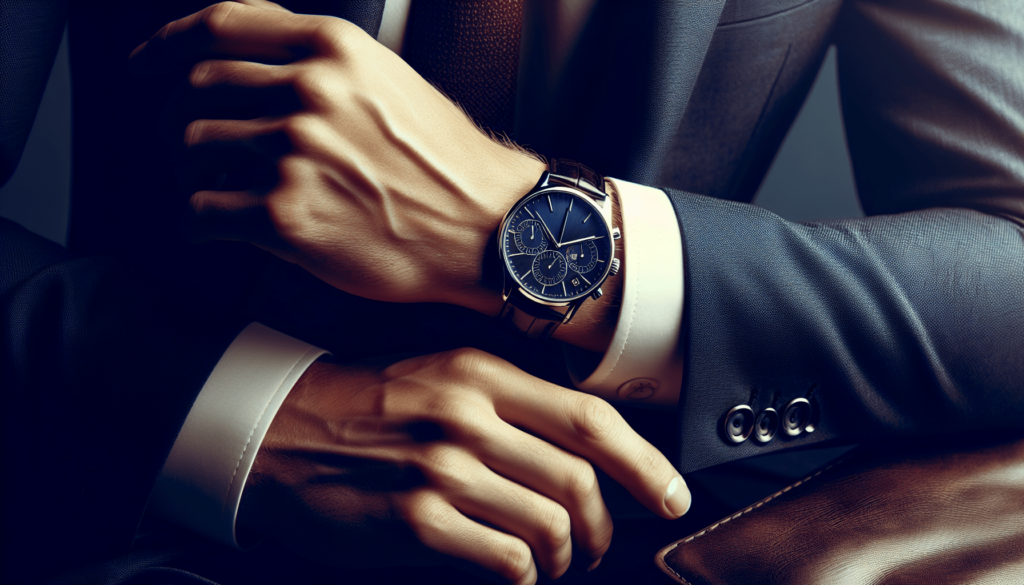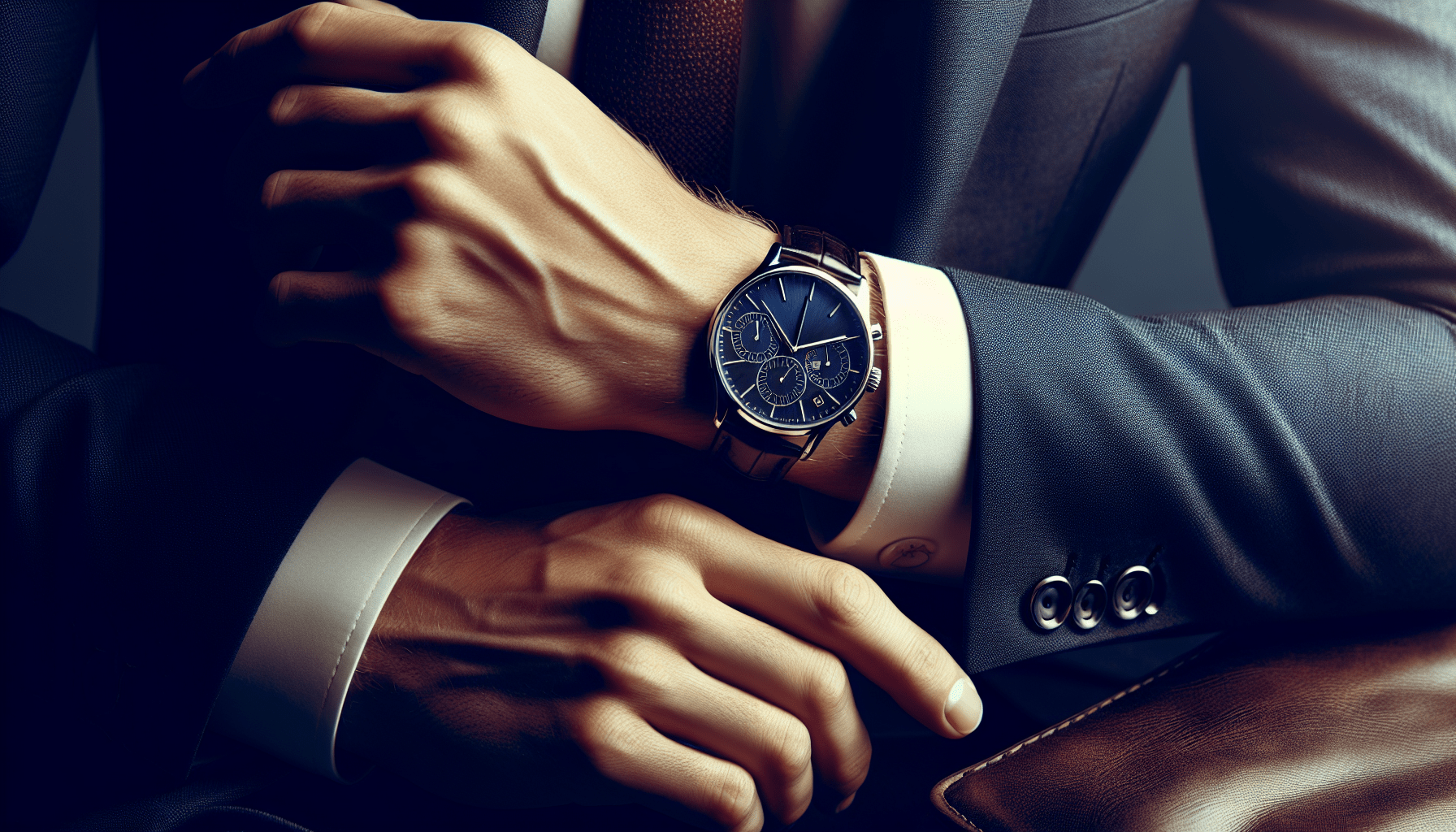Choosing the right watch can be a daunting task, especially when you consider your wrist shape. With so many options out there, how do you know which one will complement your wrist and enhance your overall style? Well, fret no more! This guide is here to help you understand the different wrist shapes and the watches that best suit each one. So whether you have a small, medium, or large wrist, we’ve got you covered with our expert tips and recommendations. Say goodbye to ill-fitting watches and hello to the perfect timepiece that will make you feel confident and stylish.

Understanding Wrist Shapes
When it comes to choosing the right watch, one important factor to consider is your wrist shape. Wrist shapes can vary greatly from person to person, and understanding your wrist shape can help you find a watch that not only looks great but also fits comfortably. This article will guide you through the process of identifying your wrist shape, measuring your wrist, and choosing the perfect watch to complement your unique style.
Identifying different wrist shapes
Before you can start selecting the right watch for your wrist, it’s crucial to identify your wrist shape. There are four main wrist shapes: round, oval, rectangular, and square. Each shape has its own unique characteristics, and understanding these differences will help you make an informed decision when it comes to choosing a watch.
Measuring your wrist
To ensure a proper fit, it’s essential to measure your wrist accurately. You can use a measuring tape or a piece of string to measure the circumference of your wrist. Wrap the tape or string around the widest part of your wrist, just above the wrist bone. Make sure the tape or string is snug but not too tight. Record the measurement in inches or centimeters, as this will come in handy when selecting the appropriate watch size.
Factors to consider when choosing a watch for your wrist shape
When choosing a watch for your wrist shape, there are a few factors to consider. These factors include the case shape, case size, strap or bracelet width, and overall aesthetic and design. By keeping these factors in mind, you can ensure that the watch you choose not only fits well but also complements your wrist shape and personal style.
Watches for Round Wrist Shapes
If you have a round wrist shape, there are specific watch styles that you should consider. Choosing watches with rectangular or square cases can help create a sense of contrast and balance with your round wrist. These angular case shapes can add a touch of sophistication to your overall look. It’s important to avoid watches with round or oval cases, as these shapes can accentuate the roundness of your wrist. Additionally, make sure to size the watch appropriately, ensuring that it neither looks too small nor overwhelms your wrist.
Watches for Oval Wrist Shapes
For those with an oval wrist shape, there are certain watch styles that can enhance your natural proportions. Opt for watches with a balanced case shape, such as round or rectangular cases with rounded edges. These case shapes can complement the elongated nature of an oval wrist, creating an aesthetically pleasing look. Avoid watches that are overly bulky or delicate, as they can disrupt the balance of your wrist shape. Consider the strap or bracelet width as well, ensuring that it complements the size of your wrist.

Watches for Rectangular Wrist Shapes
If you have a rectangular wrist shape, there are specific watch styles that can flatter your wrist shape. Choose watches with round or oval cases, as these shapes can soften the angles of your wrist, creating a harmonious look. Avoid watches with square or rectangular cases, as they can further emphasize the straight lines of your wrist. It’s important to match the case size to the length of your wrist, ensuring that the watch sits comfortably and proportionally on your wrist.
Watches for Square Wrist Shapes
For those with a square wrist shape, certain watch styles can enhance the angular nature of your wrist. Opt for watches with round or oval cases to soften the edges of your wrist and create a more balanced look. Avoid watches with square or rectangular cases, as they can accentuate the squareness of your wrist. Additionally, consider the strap or bracelet style, as a well-chosen style can complement the overall aesthetic of your wrist shape.
Watches for Small Wrist Sizes
If you have a small wrist size, there are specific watch considerations to keep in mind. Opt for smaller case sizes, as larger watches can overwhelm delicate wrists. Choosing watches with thinner profiles can also help create a sleek and proportionate look. Additionally, consider watches with shorter straps or bracelets, as longer ones can make the watch appear oversized on your wrist.
Watches for Large Wrist Sizes
For those with larger wrist sizes, certain watch styles can make a statement. Opting for larger case sizes can enhance the presence of the watch on your wrist. Consider watches with thicker profiles, as they can add a sense of robustness to your overall look. Additionally, choose watches with longer straps or bracelets to ensure a comfortable fit and a proportional appearance.
Matching Watch Styles to Wrist Shapes
In addition to considering wrist shapes, it’s important to think about the occasion and your personal style when choosing a watch. For formal occasions, dress watches are a classic choice. These watches usually have a simple and elegant design, making them suitable for professional settings or special events. On the other hand, if you lead an active lifestyle, sports watches may be more appropriate. These watches are designed to be durable and offer features such as water resistance and chronographs. When selecting a watch, take into account the overall aesthetic and design, ensuring that it reflects your unique style.
Considering Personal Preferences
In addition to wrist shape and occasion, personal preferences play a crucial role in selecting the right watch. Deciding between analog or digital watches is a matter of personal taste. Analog watches offer a more traditional and classic look with their hands and hour markings, while digital watches provide a modern and precise display of time. Similarly, choosing between mechanical or quartz movements is a personal preference. Mechanical watches offer a rich heritage and intricate craftsmanship, whereas quartz watches provide accurate timekeeping and low maintenance. Additionally, consider any additional features or complications that you may prefer, such as a date display, moon phase, or a chronograph.
Seeking Professional Advice
If you’re still unsure about which watch suits your wrist shape, don’t hesitate to seek professional advice. Visit a reputable watch retailer and ask for their expertise. They can guide you in selecting a watch that not only fits well but also matches your personal style. Alternatively, consider consulting with watch experts who specialize in wrist shapes and watch sizing. They can provide valuable insights and recommendations based on their experience and knowledge. Plus, don’t forget to explore online resources and forums dedicated to watches. These platforms offer a wealth of information from watch enthusiasts and experts, helping you make an informed decision.
In conclusion, understanding your wrist shape and considering various factors such as case shape, size, and strap width is essential when choosing the right watch. By taking into account your personal preferences and seeking professional advice when needed, you can find a watch that not only fits perfectly but also matches your style and enhances your overall look. So go ahead and start exploring the world of watches – you’re now equipped with the knowledge to make the right choice!

